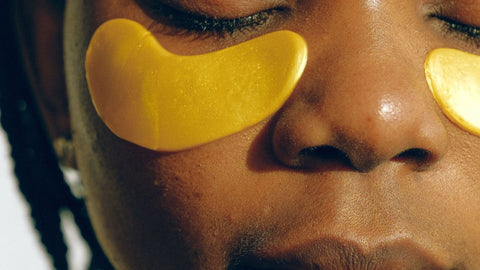Sustainable menstrual hygiene products are a win-win for the environment and your bank account.
The average menstruating person will have about 450 periods in their lifetime, and will use somewhere between 11,000 and 16,000 pads and tampons along the way—most of which will end up in a landfill. Switching to sustainable, reusable period products can save you upwards of $6,000 over the course of your reproductive life, and save the planet the environmental costs of ~40 years worth of disposable menstrual products.
Below are our choices for the most sustainable menstrual hygiene products, ranked from the most sustainable to the least sustainable in terms of reusability and environmental impact.

1. Menstrual cups & reusable menstrual discs
A menstrual cup is a small, flexible, cone-shaped cup that sits inside your vaginal canal and collects period blood. Once filled, you simply remove, empty the blood, wash, rinse, and reinsert. Menstrual cups can be reused for up to a decade with proper care.
Most menstrual cups are made of silicone—a durable, rubbery material. Silicone is made from silica—a natural Earth mineral that’s found in sand. While silica is a renewable resource, the process of turning silica into silicone requires non-renewable resources like natural gas and oil. This means silicone is not biodegradable. It is recyclable, but may not be accepted at all recycling centers.
Menstrual discs are similar to cups, but are flatter, wider, and sit higher up in the vaginal canal. Not all menstrual discs are reusable, so be sure to choose one that is if you’re looking for a sustainable period care routine. We recommend Nixit as a reusable disc option. It’s made from an ultra soft silicone that conforms to your body for a comfortable, leak-free fit.
2. Reusable pads
Reusable pads are shaped like disposable pads, but can be washed and reused for your next cycle. They’re typically made of cotton or a cotton blend, and feature snaps that secure them to your underwear. The most sustainable type of reusable pad is one made from 100% organic cotton or bamboo, rather than one that’s blended with a synthetic material like polyester. Each pad be reused for years with proper care.
3. Period underwear
Period underwear looks like regular underwear, but features a highly-absorbent lining that works like a pad to absorb period blood. Although each pair can be washed and reused for years with proper care, even brands that tout their use of organic cotton still use synthetic fabrics like elastane and polyester in the absorbent layers. Hopefully more brands will move toward 100% sustainable fabrics like cotton or bamboo in the future.
4. Tampons with a reusable applicator
Although tampon applicators are recyclable, they’re usually not accepted for sanitary reasons. Reusable tampon applicators are a relatively recent innovation that can help you divert single-use plastic waste from the landfill every time you need a tampon. They look like disposable applicators, but they’re sturdier, washable, and come with a protective cap. You can use a reusable applicator with applicator-free tampons of various sizes. Note that while the applicator is reusable, the actual tampon is not.
5. Organic pads and tampons
These items aren’t reusable, but they are a more sustainable choice compared to conventional pads and tampons. Organic pads and tampons are made with 100% organic cotton, whereas most conventional pads and tampons are made with a blend of plastic, rayon, and cotton. Plastic requires greenhouse gas-producing fossil fuels to make. Rayon, while derived from plants, requires a chemical-heavy industrial process to finish.
Cotton is a renewable resource, but it’s sprayed with pesticide more heavily than any other crop, accounting for 16% of all pesticide use. Organic cotton may still be sprayed with pesticide, but only sprays that are approved under the National Organic Standards are allowed. Use your organic tampons with a reusable applicator for an extra intentional routine.
6. Tampons with cardboard applicators
If a reusable tampon applicator isn’t right for you, tampons with cardboard applicators are a more sustainable choice than disposable plastic applicators. Most plastic tampon applicators are made from polyethylene and polypropylene—the most abundant types of plastics polluting the oceans. Plastic applicators can take up to a thousand years to decompose, whereas cardboard applicators are biodegradable.
What about menstrual sponges?
Menstrual sponges are another sustainable choice for period care, but with a catch.
On one hand, menstrual sponges are one of the only reusable period products made entirely from a renewable resource—sea sponge! Sea sponges are absorbent and flexible, so menstrual sponges can be used internally like a tampon or cup. They’re inserted into the vagina, and once at absorption capacity, can be rinsed, reinserted, and reused for 6 to 12 months.
However, some medical experts have raised concerns regarding the safety of menstrual sponges for periods. Research shows sea sponges can house particles of yeast, sand, dirt, mold, and bacteria. Even when sponges are washed or boiled, it’s difficult to ensure your menstrual sponge is clean enough to be safely used in your vagina.

Choosing the right sustainable menstrual hygiene products for you
While the term “sustainability” tends to evoke a ‘save the Earth’ ethos, the most sustainable practices aren’t just protective of the environment. They’re also able to be sustained over time. They’re habit-friendly and make sense with your life; things you could see being a fixture in your routine for the foreseeable future.
Because when it comes to both saving the Earth and forming healthy habits, consistency is key. Even the most environmentally sound practices won’t have much benefit if you only do them for a little while.
That’s why it’s important to choose sustainable period products that harmonize with your body, preferences, and regimen. Menstrual cups not your thing? Flow too heavy for period underwear? No worries, there are other options that may be a better fit.
It’s okay if the most sustainable period product for you isn’t the top eco-friendly option. Even small changes, like switching to a reusable tampon applicator or wearing period underwear on light days, can make a big, positive impact on the planet over time.







